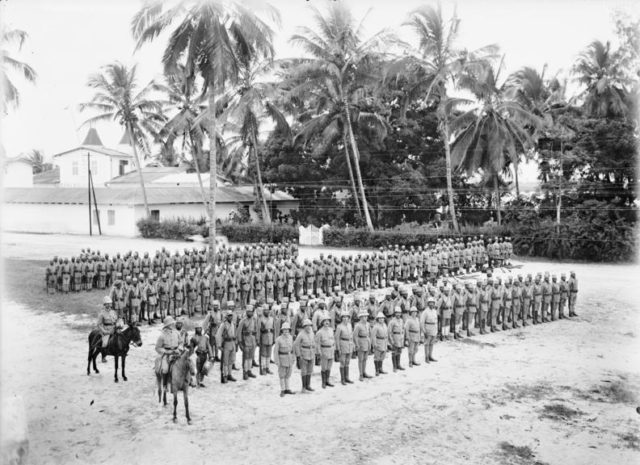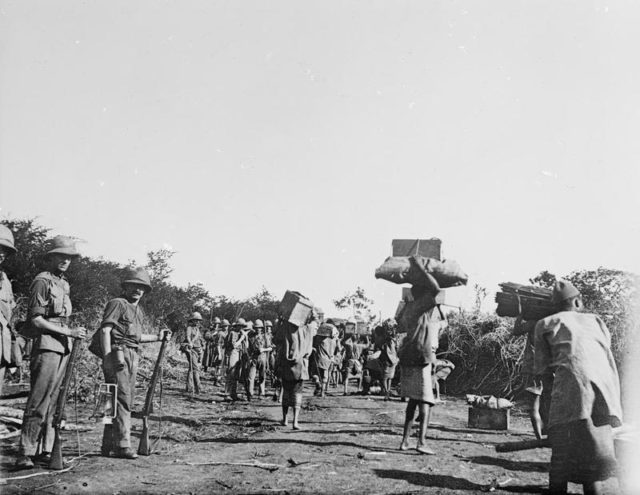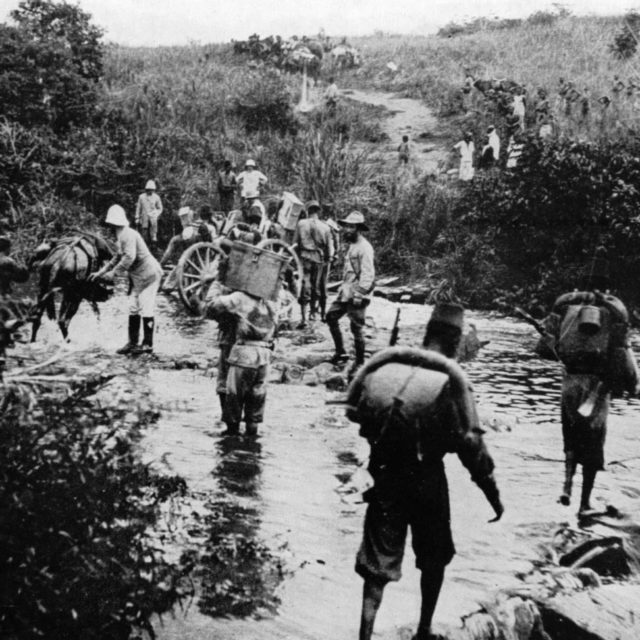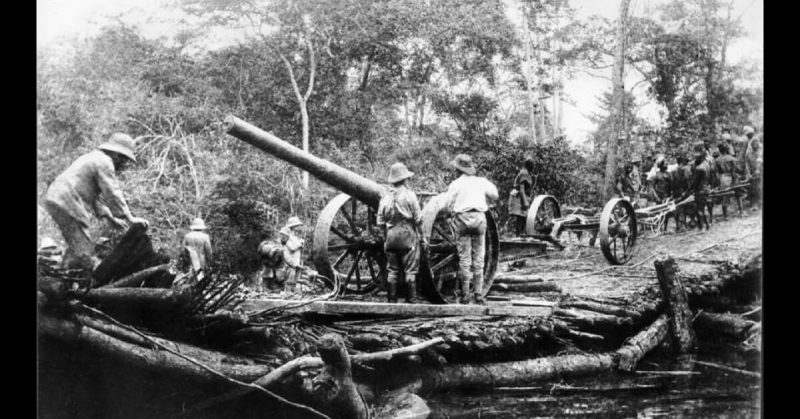The East African campaigns of the First World War were quite unlike the fighting that dominated Europe. Instead of the four years of trench-on-trench stalemate that marked the Western Front, it was a war of movement and guerrilla combat. It saw a small force of German and colonial troops occupy tens of thousands of soldiers drawn from around the British Empire.
Colonel Lettow-Vorbeck Arrives
In January 1914, Colonel Paul von Lettow-Vorbeck was given command of colonial forces in German East Africa. He quickly realized that, with only a few hundred European and 2,000 local soldiers, he could not defeat the British. They had large colonies and groups of troops in the region. However, he could keep them busy.
To do it, he reorganized his soldiers into small companies, suitable for a guerrilla war.
The Tanga Fiasco
When the war was declared, there were brief border skirmishes. These were followed by the arrival of a large British expedition from India.
Led by Major-General Aitken, it was a disaster for the British. A racist leading Indians against Germans, Aitken held his own men in contempt and underestimated the enemy. Sailing to the port of Tanga, he lost the element of surprise by sailing close to the coast giving the Germans time to prepare. He also initially refused to bombard the port.

German forces put up a brilliant defense using everything from beehives to machine guns. The British were repelled, leaving behind vital provisions.
Guerrilla War
Lettow-Vorbeck knew he could not hold on to Tanga and the coast. Instead, he settled in for a long campaign. He set up bases across the countryside. From the safety of the bush, he attacked the British, destroying communication lines and stealing supplies.
In early 1915, he risked a full battle at Jassin. He won but lost as many men as the British. His opponents could bring in replacements, while he could not. He returned to guerrilla warfare.

A Leader Robbed of Respect
In February 1916, fresh troops arrived for the British cause. This South African contingent was led by General Jan Smuts, who took over the British forces. He had 45,000 soldiers under his command, many of whom came from South Africa.
Smuts faced challenges of his own. Most British officers were upper-class men who objected to being commanded by a “colonial” and an “amateur.” Smuts had to fight snobbery in his own ranks as well as criticism in the South African press, who objected to the expedition.
The British Push
Smuts aimed for a war of maneuver, rather than throwing lives away in a head-on assault against Lettow-Vorbeck. He came from South Africa, where the Boers had used cunning to counter British might, and understood the risks of relying on numbers.
As Smuts advanced, Lettow-Vorbeck withdrew. The British took territory but could not bring the German commander to a decisive battle.
Rainy Season
The rainy season left Smuts’ bogged down as roads turned to swamps. Dysentery and fever hit his army. Men and horses succumbed.
Meanwhile, Lettow-Vorbeck’s small machine gun detachments hid in the bush. They ambushed British troops then disappeared before the British could strike back.
Despite mud, blood, and snobbery, Smuts kept the campaign moving. Along the River Lukigura, he risked his life visiting the front line, keeping himself informed and his troop’s morale up. For the first time, substantial German units were captured.
Dar es Salaam and Departure
In the summer of 1916, the two British columns advanced through the wilderness. They captured German supplies at Morogoro and took the vital city of Dar es Salaam. A few weeks later, they captured a force of over 100 German and 1,500 local soldiers.
In relation to the war in Europe, these were small numbers. To Lettow-Vorbeck’s troops, they were huge.
After nearly a year, the South Africans in the army were battered and worn down by disease and bullets. They were recalled home and Smuts with them. He had been the most effective British commander in the region, but his time there was up.

Heading South
Meanwhile, the British had beaten their enemies in West Africa. It freed up veterans of that fighting who were now sent east.
In September 1917, Lettow-Vorbeck’s forces captured weapons and ammunition from their opponents. Such victories were essential, given the difficulty of receiving supplies from home. However, the British veterans were taking their toll on his men. Heavy casualties forced him to withdraw south once more.
On the run, Lettow-Vorbeck could still be deadly. In October, he won his greatest victory since Tanga. From strong defensive positions, his soldiers held up a British column for four days. Thousands of British and colonial soldiers were killed or injured. The Germans captured more machine-guns.
Rovuma Valley
Lettow-Vorbeck then changed his approach. Assembling a force of 2,000 soldiers and 3,000 bearers, in November he headed along the Rovuma valley, the border between German and Portuguese territory.
Living off the land, the Germans raided the Portuguese and British alike. It took months for his opponents to learn to cooperate and once more put pressure on him.
After several months, Lettow-Vorbeck approached the Zambesi river. Unable to cross, he turned north. British forces were now squeezing him. He was losing men to desertion and disease. He kept going.
The End of the War
On November 11, 1918, the armistice took hold in Europe. Lettow-Vorbeck, isolated from his country, knew nothing about it.
On November 12, the British sent a despatch rider under a white flag with word of the peace. It was hard news for Lettow-Vorbeck and his men to swallow. They struggled to believe how badly things had gone in Europe. It was time to stop fighting.
The British, impressed with their opponents, treated them with respect as they surrendered. Lettow-Vorbeck had not defeated the British in East Africa, but he had done the best he could. That is worth remembering.
Source:
Geoffrey Regan (1991), The Guinness Book of Military Blunders.
David Rooney (1999), Military Mavericks: Extraordinary Men of Battle.
